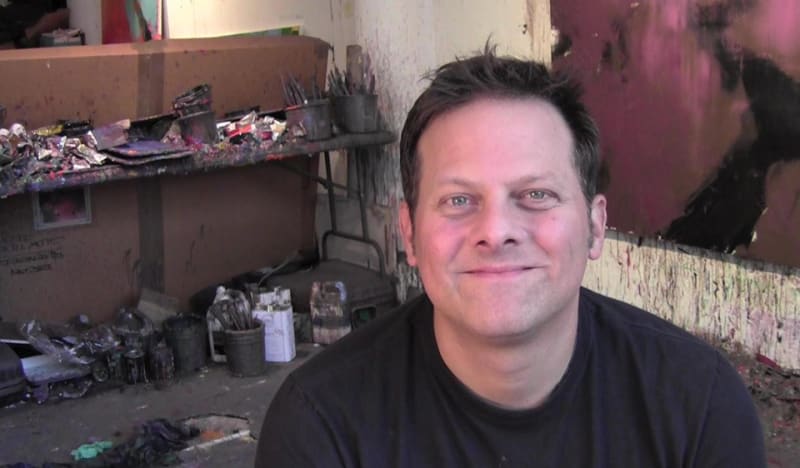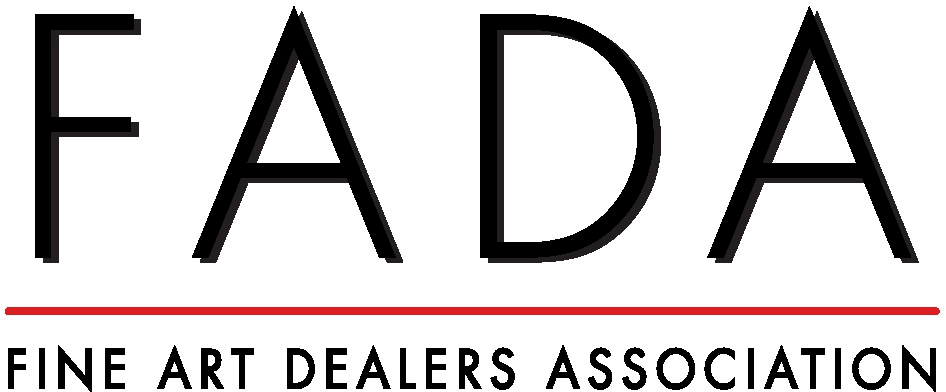Brian Rutenberg calls himself "a Southern landscape painter who lives in New York City." But don't expect to see any magnolias in his paintings-or any actual trees, for that matter. Rutenberg's vibrantly colored canvases are abstract, and any relationship to landscape has to be sought out by looking deeply. And while he was born and raised in Myrtle Beach, S.C., and is still very fond of the Carolina Lowcountry, he firmly foreswears both nostalgia and regionalism in art. So why the moniker? Partly, it's packaging, a distinctive brand identity, which the artist cheerfully acknowledges. But it's also a self-imposed psychological strategy, a way of achieving focus and, thereby, power. "Calling myself that fosters a kind of myopia that is useful for a painter," says Rutenberg, who favors contrarian pronouncements. "I want to have a narrow, limited footprint, to tell people, 'This is how I see the world, and I'm going to make you see it that way for a while."'
Recent Rutenberg paintings, such as Mint Light (2014) or Reeds Rise (2015), allude to landscape in formalistic ways, while filling the canvas with wild colors in combinations never seen in nature. The composition is usually in horizontal bands loosely suggesting earth and sky. "I tend to keep the horizon line fairly high," explains the artist, "to keep you sort of in the gravity. Think of Courbet's Burial at Ornans. The high horizon keeps everything earthy and below." Reaching tendril-like through these broad zones of color are what Rutenberg calls "vertical signifiers"-not trees, but maybe the astral bodies of trees-"which divide and subdivide the space, creating a sense of rhythm. That's how I like to begin, with darks and lights, bands that create a sense of rhythm. You feel that you're in a space that is familiar and also unfamiliar."
For-all their abstract freedom, these paintings are closely bound to a sense of place, a material reality that is very familiar to the artist. Rutenberg has been living and working in New York for over 20 years, but his impulse to paint grew naturally out of his Southern childhood. "I was painting before I even knew what a painter was," he recalls. "I would go to the marsh near where we lived and I would scoop up big handfuls of mud and I would arrange pieces of colored paper across the muck and pick up pieces of oyster shell down at my feet, with bits of color of varying intensity, and put them on top of that. I had no concept of what an artist was, but I knew that taking these materials gave me an affirmation of my location at that place at that moment. Painting enacts place."
In Rutenberg's landscape concept, the very materials the painting is made of tie it back to the land, since paint is essentially made from earth, from minerals. The physicality of his chosen medium, oil on canvas, is very important to him. He delights in pointing out that "a painting is liquefied fat mixed with ground-up rocks and smeared on a flat surface." Not surprisingly, Rutenberg's studio is hard-core messy, with just about every surtace encrusted in truly geologic layers of dried paint. "I like a certain amount of clumsiness in the process," he says. "Painting suits my desire to be clumsy, to make a mess. Play is most important. In order to paint, you need to have that locked door, a place where you can play and have permission to fail."
The texture of the dried paint drippings in the studio is reminiscent of the dense coagulation of paint at the bottom of many of Rutenberg's canvases, which he says is there to create an earthy feel in the foreground. "I want the bottom to relate to your feet, the middle to relate to your guts, and the top to relate to your head," he says, "like you're standing in a place with a discernible foreground, middle ground, and background." The physicality of his painting extends to the viewer; in fact, Rutenberg explains that the reason he favors large scale in his work is that he wants the canvas size to be in a roughly one-to-one proportion to the human body.
Despite all this physicality, Rutenberg is actually a deeply cerebral painter. A conversation with him is likely to take in artistic predecessors from Ralph Albert Blakelock to Henri Matisse to Elizabeth Murray, medieval Celtic art, politics, philos ophy, psychology, and music-especially the music of Glenn Gould. The Canadian classical pianist, Bach expert, writer, and radio broadcaster, who died in 1982 at the age of 50, is something of an obsession for Rutenberg. Every year, he makes the 12-hour train trip to Toronto (Gould was a huge fan of rail travel), where he stays in a hotel across the street from Gould's old apartment and eats at Gould's favorite diner, Fran's, ordering the same meal the pianist always did-scrambled eggs and Sanka. Then he goes up into the Algonquin Forest, north of the city, kayaking and sketching where Tom Thomson and the Group of Seven used to paint a century ago.
Before he went full-time into painting, Rutenberg was a drummer and wanted to be a professional musician, so Gould appeals to his musical side. But there's far more to it than that. In 1999, Rutenberg was invited to create a series of "Gould paintings" (canvases about the size of a person's face, in which a rectangle frames an oval shape, filigreed with Celtic-inspired line work, that suggests the orb of the eye) and display them in the lobby of the headquarters of the Canadian Broadcasting Company (CBC) on the occasion of the annual Glenn Gould Gathering. "It sounds nerdy and stuff," says Rutenberg, "but it really set the course for me as a painter. Gould is my hero. He taught me how to be an artist and how to protect my life as an artist. He taught me how to brand myself. He branded himself long before that term was popular. The relationship to Gould is central."
Beyond music, Rutenberg's other longtime ambition was to be a stage magician, and magic enters into a lot of his discussion of painting and its powers. "How does a two-dimensional surface smeared with fat all over suggest light where there is darkness and space where there is flatness? It's very similar to magic, in a way. Because in magic, what you see and what you know to be true are in violent collision with one another. I like that idea of two things colliding. A work of art, especially a painting, is the visceral and the intellectual smashing into each other, creating a third thing." One of Rutenberg's favorite expressions, "the third thing" refers to a kind of mutual creation process that happens when a viewer interacts deeply with an artwork. "The painting always comes down to the third thing-there's you, then there's that, and together you manufacture that third thing," he explains. "I think what we're all after is the third thing. When you're dialed into a painting, you might just get that one little moment-Gould called it ecstasywhen the intent and the execution are the same thing.


